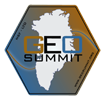| PI | Institute/Department | |
|---|---|---|
| Booth, Charles |
Biospherical Instruments, Inc.
|
| Program Manager | Funding Agency | |
|---|---|---|
| Marinelli, Dr. Roberta |
NSF, Office of Polar Programs
|
The National Science Foundation (NSF) Ultraviolet (UV) Spectroradiometer Network was established in 1987 by the Division of Polar Programs in response to serious ozone depletion reported in Antarctica. Biospherical Instruments installed the first instruments in 1988 and has operated the network continuously since. The network was the first automated, high-resolution UV scanning spectroradiometer network in the world. It continues to successfully operate in the harshest environments on Earth (Antarctica and the Arctic), and is currently providing data to researchers studying the effects of ozone depletion on terrestrial and marine biological systems. Network data is also used to ground-truth satellite observations, develop and verify models of atmospheric light transmission, and evaluate ozone depletion impacts. The network currently consists of six SUV-100 scanning spectroradiometers installed at three sites in Antarctica (McMurdo Station, Palmer Station, and South Pole Station), one site in Argentina (Ushuaia, Tierra del Fuego), and two sites in the United States (Barrow, AK, and San Diego. CA). The San Diego site is a multi-purpose system facility, and used for training site operators, testing new configurations, and collecting data. In July/August 2004, a Biospherical Instruments Inc. SUV-150B scanning spectroradiometer system will be installed, and begin monitoring at Summit, Greenland. This system is to be installed in the “Green House” facility. Dependent on the time of the year, solar scans are conducted quarter-hourly when the sun is above the horizon. A complementary GUV filter-detector spectroradiometer is part of the system, which provides one minute averaged global irradiance values at several UV wavelengths. Ancillary data (Eppley PSP, Total Scene Irradiance (TSI) sensor, various system temperatures, and monochromator position) are collected over 24 hours at intervals ranging from 1 to 60 minutes. Data are collected on a reduced schedule at night. At sites inside the Arctic or Antarctic circles, instrument operation is on a reduced scan schedule during the winter darkness. Dependent on internet bandwidth and connection reliability, our objectives for data availability are: - Real-time data updates (hourly - limited due to bandwidth) from the GUV filter-detector radiometers. This data will have one-minute resolution (an average of 60-120 samples per channel, per minute), of 30+ data products, available as it is for our other sites, e.g.: www.biospherical.com/nsf/login/GuvSAN.asp (except Ushuaia, where a fixed-IP full time internet connection is cost prohibitive). - We provide weekly updates of "preliminary" data from the SUV scanning spectroradiometers, as available at: www.biospherical.com/nsf/login/update.asp . - Post-processed, final QA/QC'd data products, including full spectra, are made available on a schedule to be determined – typically annual. These data are characteristically the same as what can be obtained at www.biospherical.com/nsf/login/login.asp . - We also provide grantees with additional data products; weighted integrals, preliminary spectra, etc. from the SUVs, with greater frequency of availability, in support of specific scientific protocols. A request in the SIP and to nsfdata@biospherical.com by the grantee(s), is the method to begin the process for obtaining this additional support.
Biospherical Instruments Inc. (BSI) operates the NSF OPP’s Ultraviolet Spectral Irradiance Monitoring Network (UVSIMN). One of the UVSIMN's systems is located at Summit, Greenland. In 2004 two BSI engineers visited Summit Station to install a scanning spectroradiometer that made Summit Camp a part of the NSF Polar Programs UV Spectroradiometer Network (as it was then called). In 2005, BSI engineers returned to characterize/calibrate, partially dismantle, reinstall, re-characterize/re-calibrate the instrument as a result of the raising of the Greenhouse (where the sytem is housed) to the surface of the snow. CPS (formerly known as VPR) assisted BSI with transportation to/from Summit (via Scotia, NY), and the parital dismantling and re-installation of the insturment, as well as with science technician support for year-round operation (approximately 5 hours/week). Thereafter, BSI engineers will perform as-needed visits to Summit for calibration, service, and upgrades. In those years that site visits are not necessary, CPS science technicians will continue to operate the UV spectroradiometer on BSI's behalf. In 2006, due to planned Summit Camp population constraints, BSI personnel planned to visit Summit for calibration, service, and/or upgrades only if needed. CPS continued to provide science technician support for year-round operation (approximately 5 hours/week). As it turned out, BSI did not need to make a site visit to the station. In July 2007, one technical staff member from BSI will visit Summit to perform system characterizations, and any necessary system engineering updates and/or service. While the BSI staff is on station, up to 16 hours of additional science technical support will be provided. CPS will assist BSI with transportation to/from Summit (via Scotia, NY); in the performance of the site visit’s objectives at Summit Camp; and provide the UVSIMN with science technician support for year-round operation (approximately 5 hours/week). In 2007 and 2008, BSI engineers will visit Barrow, AK, to perform annual site visits to the BSI's UV intrument at NARL. The objectives of these visits are to perform system calibrations, service, and engineering upgrades to the system. BASC assists BSI with a co-location laboratory (at UIC-NARL) and infrastructure matters – principally in the areas of IT support, communications, and cargo logistics. No trip is planned to Summit for 2008.
| Season | Field Site | Date In | Date Out | #People |
|---|---|---|---|---|
|
2004
|
Greenland - Summit
|
|
|
2
|
|
2005
|
Greenland - Summit
|
|
|
2
|
|
2006
|
Greenland - Summit
|
0
|
||
|
2007
|
Greenland - Summit
|
|
|
1
|
